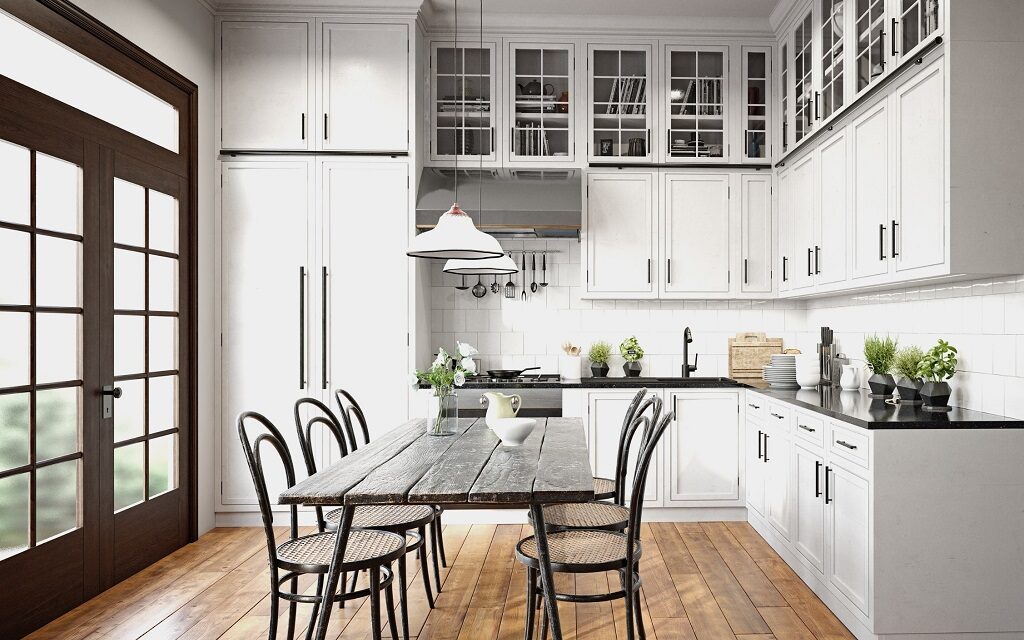Though there are many options to refresh your kitchen cabinetry over time, it is important to keep in mind that kitchen cabinets aren’t designed to last forever. They certainly won’t last as long as your home, so there is a good chance that you will eventually need to replace your kitchen cabinetry at some point as the years go by.
Not only do styles change, but kitchen cabinets can become worn, as well as lose some of their functionality. Here are tips that will help you know when it is time to actually replace your kitchen cabinetry instead of just refreshing them.
Table of Contents
- How Long Do Kitchen Cabinets Generally Last?
- 5 Signs That It’s Time to Replace Your Kitchen Cabinetry
- Common Mistakes to Avoid When Choosing New Cabinetry
- Kitchen Cabinetry Resources
Also see:
How Long Do Kitchen Cabinets Generally Last?
There are many credible industry sources that claim high-quality, well-constructed kitchen cabinets can last up to 50 years. The reality is, however, that there are several factors that will likely decrease this life expectancy to less than half of that, in the range of 20 to 25 years.
Whether you own custom cabinets or have a pre-made kitchen, either version will one day reach the end of their respective lifespans.
For example, the average lifespan of a kitchen itself is just 20 years. Often this means that the cabinets will be changed along with the rest of the kitchen. If they are well-made and well-maintained, then they can last the same length of time that the kitchen does. In this scenario, new cabinetry opens up the opportunity to redesign the kitchen’s workflow to also incorporate newer appliances, technologies and uses.
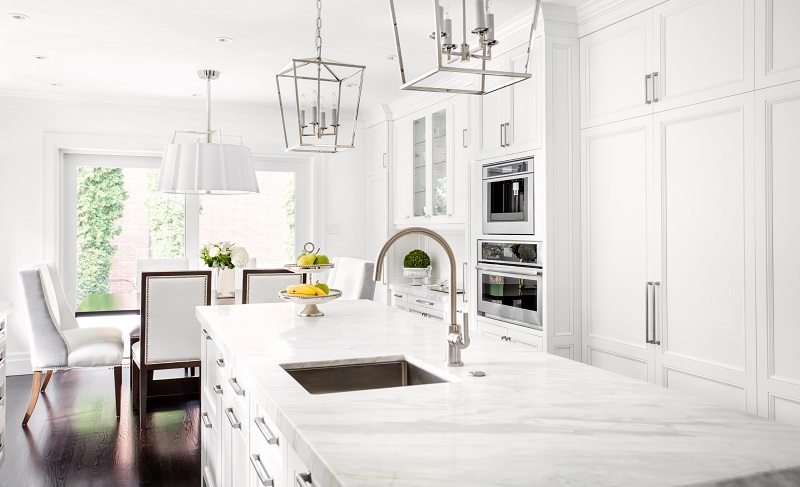
Of course, lower-quality kitchen cabinets that aren’t made out of high-quality materials are likely to have significantly shorter life spans than average. You could find yourself needing to replace them after 5 to 10 years, especially if you plan to sell your home in a competitive market. Plus, if the cabinets become damaged in some form, there’s a chance you will have to replace them earlier.
Keys to extending the lifespan of your cabinetry include: preventing water and termite damage; and taking proper care of the wood, hinges and hardware. What is most important, however, is having a highly functional and flexible kitchen with a workflow that is well-fitted and adaptable to your household’s needs.
5 Signs That It’s Time to Replace Your Kitchen Cabinetry
When reviewing the various signs that it may be time to replace your kitchen cabinetry, keep in mind that several issues may be interrelated. Unlike a roofing system, for example, which typically always maintains the same dimensions, existing cabinetry may be restricting the full potential of your kitchen, both aesthetically and functionally.
Here are the most common signs that it’s time to replace your existing kitchen cabinets:
- Water Damage
- Outdated Design
- Overall Functionality Is Frustrating
- Newly Added or Upgraded Appliances
- Your Kitchen Layout No Longer Works
1. Water Damage
Water damage is a sure sign that the days are up for your kitchen cabinets. If there is a leak in your kitchen, or even a flood, and the cabinets become damaged as a result, then the chances of them surviving into the future are slim. You will likely need to consider replacements quickly.
Water damage can be particularly destructive to wood materials most commonly used in kitchens. Once water seeps in and warps the cabinet design, there is really no coming back. Pre-existing cabinets should also be thoroughly inspected to feel for soft spots, which are indicators of water damage that occurred prior to your taking ownership of your current home.
Indicators of water damage to your kitchen cabinets include:
- Wood showing signs of warping
- Cabinet doors not opening or closing properly or easily
- Cabinetry, including interior surfaces, having soft spots
- Cabinetry, including interior surfaces, showing signs of mold
Before starting the process of purchasing and installing new cabinetry due to water damage, it is imperative to remediate any and all potential leak sources before proceeding. We highly recommend hiring a water remediation specialist to prevent similar water damage from reoccurring in the future.
2. Outdated Design
It could just be that the design has become outdated and you don’t like the kitchen cabinets. Perhaps this design was on trend when you first moved in years ago, and now your aesthetic tastes have dramatically changed since.
If the design is old and you feel that it is impacting the rest of your kitchen’s appeal, then there is nothing wrong with making a change, if you can afford to purchase new kitchen cabinets.
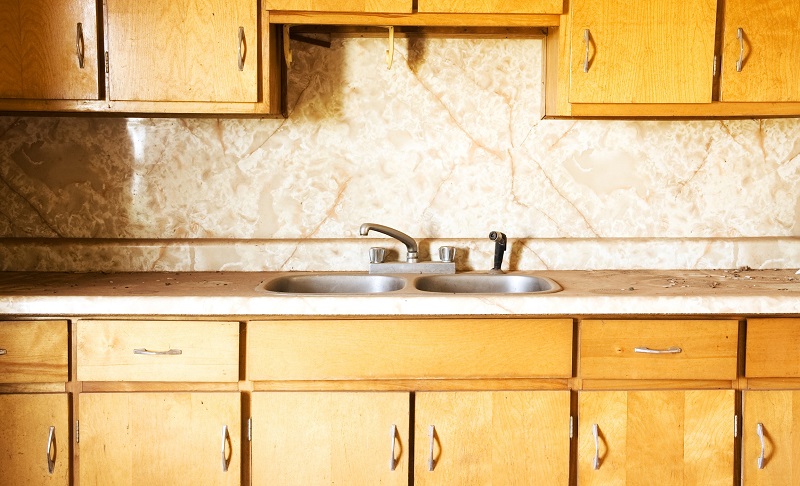
If your budget is tight, however, there are two popular options to refresh an outdated cabinet design: refacing and refinishing. Again if your existing kitchen workflow is conducive to your lifestyle, this option may be a better fit for your situation.
3. Overall Functionality Is Frustrating
Experiencing subtle, and not-so-subtle, frustration on a daily basis may be the hardest sign to “see”. Your cabinets may look great, be in terrific condition, but your interaction with the cabinetry feels “off”.
This situation can be noticeable if you often find yourself getting frustrated interacting with your kitchen, either for extensive cooking and preparation activities, or just quick tasks. Even small tasks, such as getting your utensils and ingredients out, can become increasingly annoying.
In short, this issue can be tied to a bigger issue of having a kitchen that doesn’t flow well with your needs and usage. On top of that, the kitchen cabinets may be frustrating in other ways, such as not having a soft-close function to make it smoother to open and shut.
4. Newly Added or Updated Appliances
Have you recently purchased a new appliance for your kitchen and discovered that it doesn’t work with your current cabinet layout? There’s a chance that you have chosen a bigger oven or changed appliances in some other way, and this can mean that you need to alter the layout of the kitchen, and this includes the cabinetry.
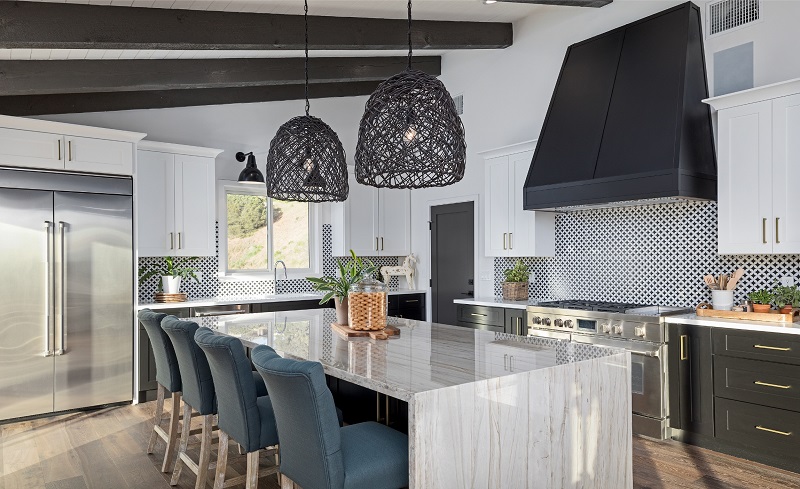
Often, this will come as part of a larger kitchen redesign project, but if an appliance breaks during the lifespan of your kitchen and you find that you want to go for a different, bigger design, then you might need to alter the cabinets, as well.
We suspect that new technologies and features being continually added to kitchen appliances will further shorten the average lifespan of the kitchen, in the near-term. We believe this as we expect an increasing percentage of homeowners will want to take advantage of integrated kitchen systems that offer highly valuable, long-term benefits, such as:
- Improved Energy Efficiency
- Expanded Intelligent Functionality, with Personalized Experiences
- Longer Lifespans Due to Automated Prescriptive Maintenance
- Enhanced Safety
- Increased Flexibility Via Modular, Transformable Systems
5. Your Kitchen Layout No Longer Works
The layout and functionality of your kitchen, no matter your lifestyle or family size, must work for you. Perhaps your needs have changed and the way you use your kitchen has been altered, or you have decided that you want to change the layout completely.
Kitchens are functional, but they also provide valuable space to spend extended periods of time socializing with family and friends. They can be a space for entertaining and you might even want your kitchen to be the center of your home, in terms of where you spend the most time with others.
Two intertwined market-trends to keep an eye on in the US that will dramatically increase the need to reinvent the workflow of residential kitchens are:
- The growing population of Aging In Place Residents
- The increasing percentage of Multigenerational Households
More and more kitchens will need to be redesigned with Universal Design principles in mind that will make kitchens safer, easier and more functional. This invaluable design approach is not only for aging seniors who wish to remain at home, but for individuals of all ages that face unique physical and mental challenges at home on a daily basis.
Common Mistakes to Avoid When Choosing New Cabinetry
When shopping for new kitchen cabinets, keep in mind that it is easy to make a mistake when choosing new cabinetry. You should always be very cautious to ensure that you end up with a design that you will be happy with for many years to come.
Here are tips to help you make a wise choice for kitchen cabinetry:
- Don’t make any quick decisions on design, as you might regret impulsively selecting a bold style, for example.
- Ensure you get something durable that can last a long time.
- Make sure you calculate interior cabinet space (e.g. height and depth) to ensure that you have enough storage room for your cooking utensils and equipment.
- Think carefully about the layout you want before choosing cabinetry.
- Make sure you accurately measure your appliances and leave space for them in your kitchen.
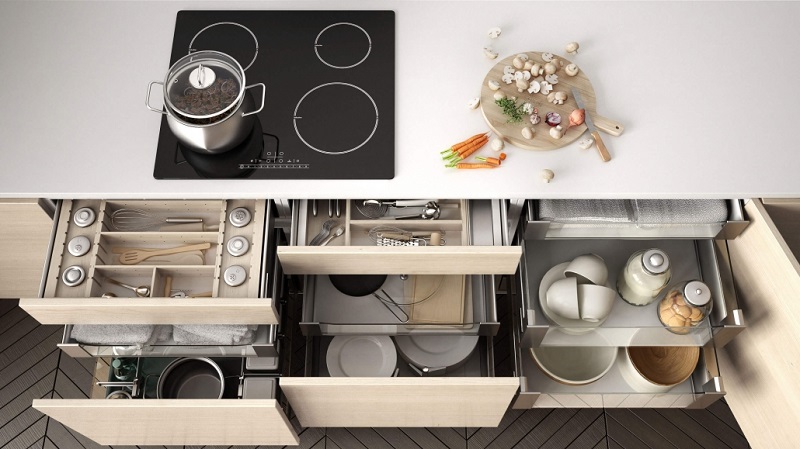
Image courtesy of Majestic Cabinets, LLC.
Kitchen Cabinetry Resources
- Kitchen Cabinet Inspiration
- How Long Do Appliances and Parts of Your Home Last?
- Life Expectancy of Your Kitchen
- HomeAdvisor Kitchen Cabinet Replacement Costs Guide
- HomeAdvisor Average Kitchen Cabinet Costs by Project Type
This article was written with Owen Wright, a guest contributor. Owen is a Content Marketing Specialist at Majestic Cabinets, with several years of experience in the home improvement industry, who enjoys sharing his industry knowledge and lessons-learned with others.
Additional Recommended Kitchen & Cooking Articles
- Best Cooking & Food Shows Streaming on Netflix
- Best Cooking & Food Shows Streaming on Hulu
- Best Cooking & Food Shows Streaming on Amazon Prime
- Best International Cooking Channels on YouTube
- Best Try Before You Buy Experiential Retail Programs for the Home
- 13 Innovative Examples of Assistive Technology for the Home
- Need an Aging In Place Specialist? Look for These Certifications!
- Aging In Place Technology for Today and Tomorrow
- Never Thought You’d Live in a Multigenerational Home? Think Again!
| Purgula is reader-supported. When you click on links to other sites from our website, we may earn affiliate commissions, at no cost to you. If you find our content to be helpful, this is an easy way for you to support our mission. Thanks! Learn more. |

